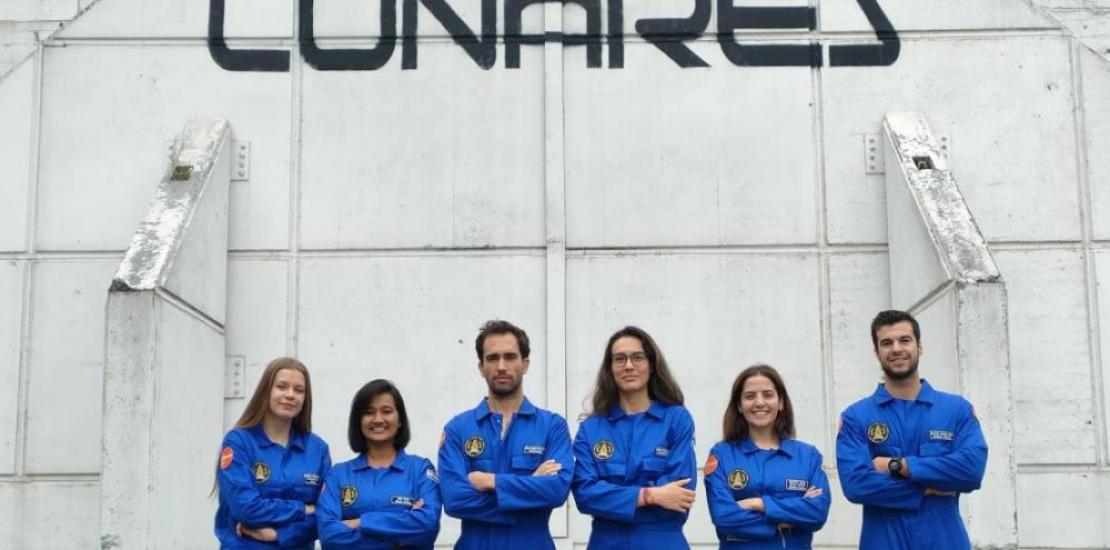UCAM cooperates with the Space Research Centre in Poland
The Mission Nike II - UCAM, in which Guillermo Rojo and Beltrán Cáceres take part as analog astronauts in simulations, develops technological devices and evaluates and monitors physical and psychophysiological performance on the moon
The LunAres Space Research Station, located in Poland, was the setting for the NIKE II-UCAM Mission, whose main objective was to simulate the conditions of a trip to the Moon for fifteen days. Two of the participants in this experiment were Guillermo Rojo, a UCAM athlete, and Beltrán Cáceres, a PhD student at UCAM. All mission data is available to NASA, Virgin Galactic or SpaceX. In addition to new research studies, some educational areas may be added in this field.
The UCAM High Performance Sport Research Centre played a key role in designing the plan to evaluate the physical, physiological and psychological evolution of the crew members, observing the mission's impact on them. Guillermo and Beltrán, together with four colleagues, became analog astronauts to perform simulations and scientific experiments on Earth in the same conditions and scenarios as a real space mission.
Guillermo Rojo, champion at the Tokyo Paralympic Games as Gerard Descarrega's guide and physical trainer for elite athletes and astronauts, acted as mission commander, monitoring the experiments and communicating the data. A key moment for the analog astronauts was landing in the Shackleton Crater replica and performing extra-vehicular activities wearing the spacesuit. Another goal of the NIKE II-UCAM mission was to test the MaxForce device, which improves the physical condition by reducing training time in gravity and zero gravity environments and providing real-time data on physical performance.
It was a great experience for Beltrán, who is doing a PhD to improve the training plan for the Spanish military, as everything is designed to be experienced as similar as possible to a real space mission: ‘We were completely isolated. During the mission, we conducted scientific research and assessed and monitored the physical and psychophysiological performance of the team members.’ As an army officer physician, Beltran examined the health status of the crew on a daily basis.
Results dissemination, next Friday
The Science and Water Museum of Murcia will host the conference 'The physical and mental impact of analog space missions: a real experience’ on Friday 6 October, at 7 pm. This activity is planned as part of the World Space Week 2023, which will offer lots of activities organised by the Scientific Dissemination Association of the Region of Murcia (Asociación de Divulgación Científica de la Región de Murcia). Beltrán Cáceres will then try to ‘raise awareness of the importance of analog missions as a scientific means to go further in the space race, as well as to expose the physical and psychological demands of a mission faced by astronauts, also from my own experience.’




